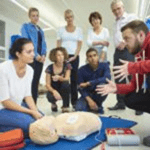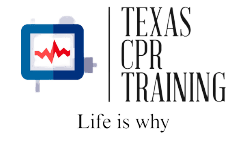
Top 5 Misconceptions about CPR
Sudden Cardiac Arrest (SCA) is very common worldwide and is responsible for 50% of all heart-related deaths. SCA can appear without any warning or indication. This means, one cannot seek medical help just prior to the situation. Hence, learning CPR can actually help you save lives of people in situations where medical professionals are not available. Despite the increased awareness regarding CPR and training sessions, various people still come up with unauthentic stuff and spread the misconception without confirming them from professionals.
Here is the list of myths people have regarding CPR along with the factual explanation.
#1: I am a pro at performing CPR as I attended the CPR training session 4 years ago
This is a widespread misconception as having a 4 year old CPR certificate is not sufficient since the training course has been changing a lot since past few years. Even though your memory is good and you remember all the steps involved in CPR adequately, you need to learn all new innovations which have been incorporated to carry out the process efficiently.
#2: If I did not do the compressions appropriately, I might end up killing the person.
Well, not touching the victim and leaving them for the professionals to deal with could be more deadly. Scientific studies have proven that a brain can be permanently damaged within 10 minutes, if adequate oxygen is not supplied. Hence, doing imperfect CPR can actually save the person instead of not trying it at all.
#3: CPR 100% guarantees victim’s survival
CPR is not at all the ultimate treatment for sudden cardiac arrests. CPR only helps the person to avoid death and permanent damage to organs until the medical help arrives with AED or defibrillator. There are only 2% to 15% people reported to survive from cardiac arrests, however providing effective CPR increases the percentage up to 30%.
#4: Blowing into the patient’s mouth is mandatory
Many individuals assume that carrying out mouth-to-mouth resuscitation is important and thus, they hesitate to go for it. In fact, blowing into the mouth is encouraged but is not an obligatory step. Many a times “hands-only CPR” is sufficient to revive the victim’s heart. Nowadays, many professionals suggest focusing more on compressions and pumping of the heart than providing the victim with mouth-to-mouth resuscitation.
#5: Mouth-to-mouth resuscitation can lead to HIV/AIDs
HIV/AID is a sexually transmitted disease and will only transmit via blood or sexual discharge. There is no chance of AIDs spreading through the mouth or saliva. However, if such feelings are preventing you from carrying out effective CPR blowing session then you can use a bag mask or a barrier device for your own satisfaction. Also, remember that blowing is not a compulsory step and in most cases compressions are enough to make the victim’s heart beat again.
These misconceptions regarding CPR are very common and usually make people reluctant to provide immediate medical attention to SCA victims. We must try to avoid the sad mentality of staying in sidelines and should demonstrate our heroic side at the time of need, by utilizing the vital knowledge of CPR.
CPR: Separating Face From Fiction
Misconceptions about CPR
What are the Most Common Myths about CPR and are They True
CPR Facts & Stats
Brought to you by Texas CPR Training
